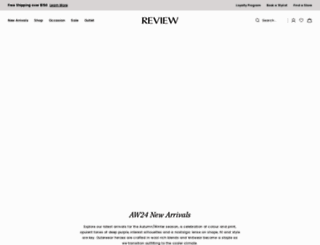Review Australia | Women's Clothing
Page Load Speed
52.7 sec in total
First Response
2.8 sec
Resources Loaded
49.1 sec
Page Rendered
818 ms

About Website
Visit review-australia.com now to see the best up-to-date Review Australia content for Australia and also check out these interesting facts you probably never knew about review-australia.com
At Review Australia we’re known for our unique vintage-inspired designs and for striving to empower women to wear what makes them feel fantastic.
Visit review-australia.comKey Findings
We analyzed Review-australia.com page load time and found that the first response time was 2.8 sec and then it took 50 sec to load all DOM resources and completely render a web page. This is a poor result, as 95% of websites can load faster. Unfortunately, there was 1 request timeout, which can generally increase the web page load time, as the browser stays idle while waiting for website response.